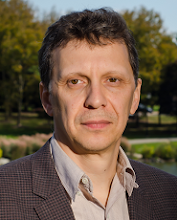4/5/2012: Caught something relevant while reading Larry Page's 2012 Update from the CEO (Google's CEO in case you are wondering) - “a healthy disregard for the impossible”, sounds like an essential quality for an entrepreneur.
2/23/2012: Just came across the following on Google+ and figured it would make a wonderful addition to the post I published earlier :)
The exploration of the subject started for me, as it often does, from taking in information from various sources over a period of time. Then, things started moving and coalescing in my head until something clicked and voilà - all pieces of the puzzle fitted together and a picture was formed.
No, I am not going to describe that picture. It is my personal interpretation, the symbiosis of my experiences and external stimuli. Thus, others could create their own interpretations, based on their own experiences. I will, however, share a few catalysts with you. Here they are, in no particular order:
"Every time you want to make any important decision, there are two possible courses of action. You can look at the array of choices that present themselves, pick the best available option and try to make it fit. Or, you can do what the true entrepreneur does: Figure out the best conceivable option and then make it available."
The article also cites an incredibly short and concise definition of what entrepreneurship is, definition conceived 37 years ago by Harvard Business School professor Howard Stevenson:
"Entrepreneurship is the pursuit of opportunity without regard to resources currently controlled."
An interesting concept referred to by its creator Joe Abraham as BOSI (he has also authored the following book on the subject - "Entrepreneurial DNA"). Find out if Builder, Opportunist, Specialist or Innovator DNA drives you (and what to do about it) here. There are also a couple of short videos that introduce BOSI concept, here's an example:
An excerpt from the 1994 interview with Steve Jobs that later became a central theme for the "One Last Thing" – Steve Jobs PBS Documentary:
"When you grow up you tend to get told the world is the way it is and you're life is just to live your life inside the world. Try not to bash into the walls too much. Try to have a nice family, have fun, save a little money. That's a very limited life. Life can be much broader once you discover one simple fact: Everything around you that you call life was made up by people that were no smarter than you and you can change it, you can influence it, you can build your own things that other people can use. Once you learn that, you'll never be the same again."Or if you prefer to watch it online:


Comments
Post a Comment